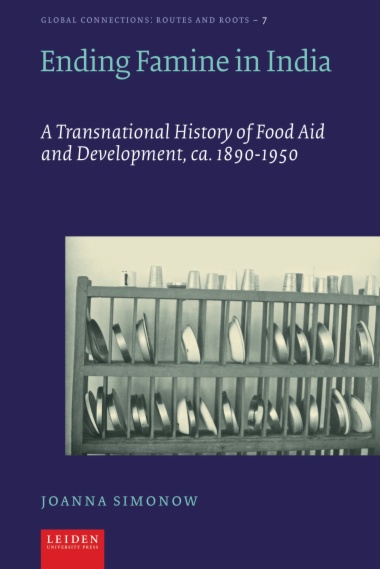The task of ending famine in India was taken up by many at the beginning of the twentieth century. Only decades earlier, famine in India had been believed to be a necessary evil. Now it was the reason for the increasing activities of doctors, nutritionists, social reformers, agricultural experts, missionaries, anti-colonial activists and colonial administrators, all involved in temporary relief and finding permanent solutions to famine.
- Table of Contents
- Figures and Tables
- Fig. 1. British Food Supplements for Bengal. The Hindustan Times November 7, 1943.
- Fig. 2. The Karmarkar Family: To the left and right of Gurubai Karmarkar, who is at the centre of the picture, are children the couple had adopted. The different status of these children within the composite family is rendered visible through the embroide
- Fig. 3. Victims of British Rule. Cover page of Free Hindusthan I: 8 (Nov 1908). Reproduced courtesy of the South Asian American Digital Archive.
- Fig. 4. India. The Time for Mediation is now. An ad placed by the India League of America in the New York Times. Source: New York Times (28 Sep 1942), 9.
- Table 1. Ration Sizes according to the Provisional Famine Code of 1883
- Acknowledgements
- Abbreviations
- Introduction
- Part I. Nutritional Science, Famine and Food Aid in South Asia
- Chapter 1. The Limits of Famine Relief: Colonialism, Nutritional Science, and the Indian Social Service Movement, 1890s–1930s
- Chapter 2. Food Technology, Nutritional Science, and Indo-US Entanglements in the 1940s and 1950s
- Part II. From Famine Relief to Community Development: The American Missionary Movement in South Asia
- Chapter 3. Worldly Needs and Religious Opportunities: The Famine Relief of American Missionaries in Bombay, 1870s–1920s
- Chapter 4. Promising Freedom from Famine: American Missionary Rural Reform, 1910s–1940s
- Part III. Anticolonial Famine Relief: Mobilising against Hunger and Colonialism
- Chapter 5. Famine Amid Swadeshi and Swaraj, 1900s–1920s
- Chapter 6. Famine Relief and Nationalist Politics on the Eve of Independence: The Bengal Famine of 1942–44
- Chapter 7. American Food Aid for Independent India
- Conclusion
- Notes
- Bibliography
- Index

